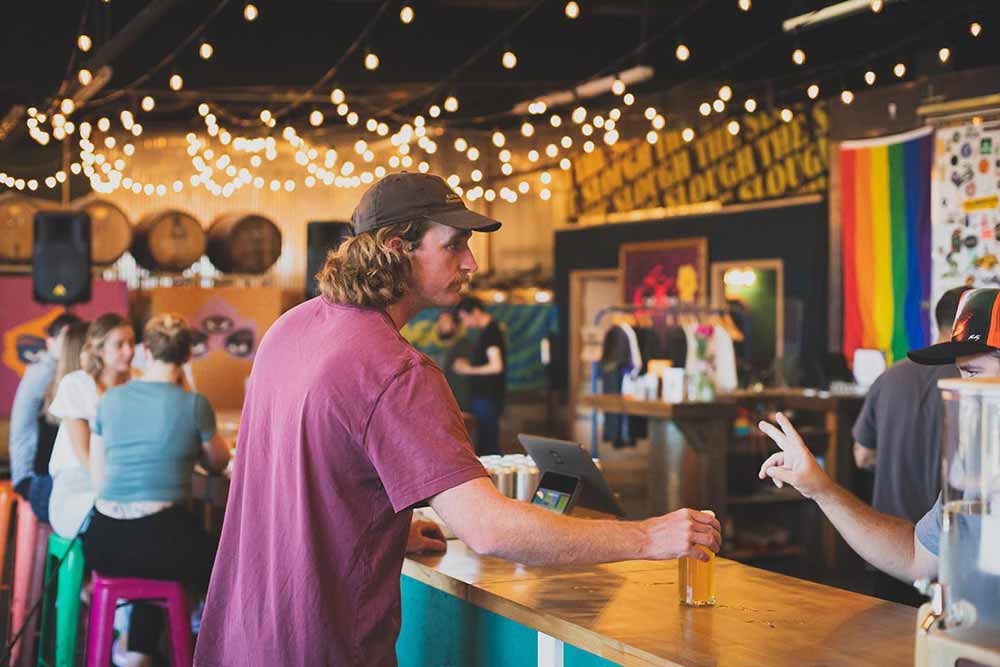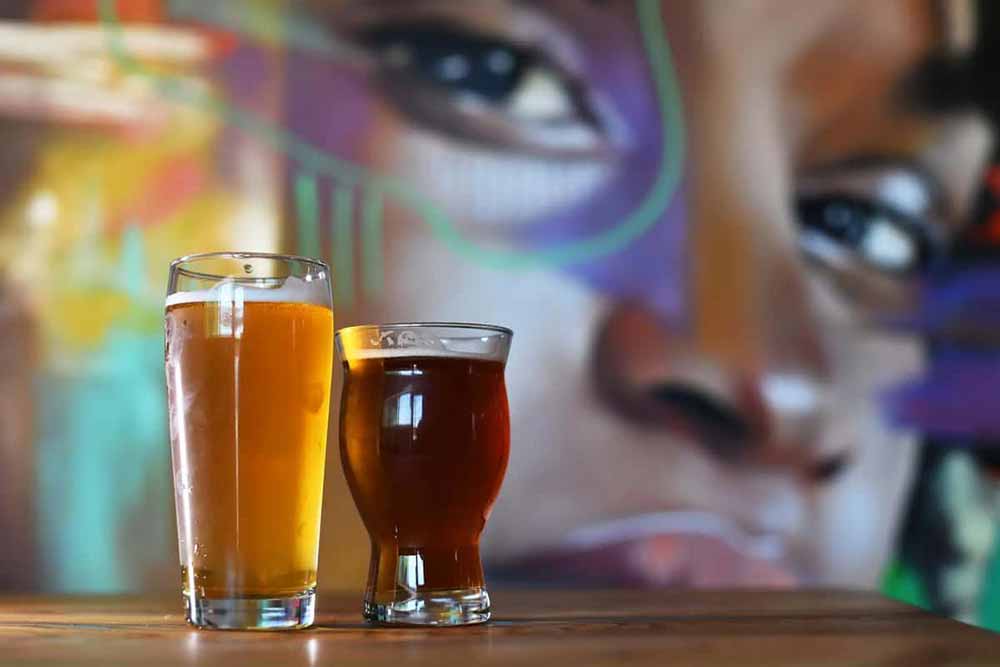Shop
9 Beer Trends to Watch in 2023
What to watch in the craft beer industry in 2023.
Look, we can’t predict the future. But since we eat, drink, write breathe, and live beer every day, we do like to think we have the pulse on beer trends in the industry.
And we’re not the only ones.
It’s with great pride that we can tell you 2022 was the best year at the magazine ever. We hit almost 3.4 million pageviews and had 2.1 million folks visit and read Hop Culture last year.
In case you missed out on everything, you can always take a look back at The Best Hop Culture Articles You Missed in 2022.
Spoiler alert: Our top-performing article of the year by far was “The 15 Best American IPAs Available in Most Stores Right Now,” with over 105k pageviews.
We basically think that speaks for itself when it comes to IPAs (that and the fact that Allagash actually added an IPA to its core lineup for the first time ever). As a result, we don’t mention anything too crazy about hoppy beer trends below, so don’t crucify us. It’s just that, to us, the popularity of American IPAs and hazies isn’t a trend anymore; it’s just standard.
With that in mind, these are our nine projections, forecasts, and predictions that we’re watching in craft beer in 2023.
9 Beer Trends to Watch in 2023
A Return to Taprooms
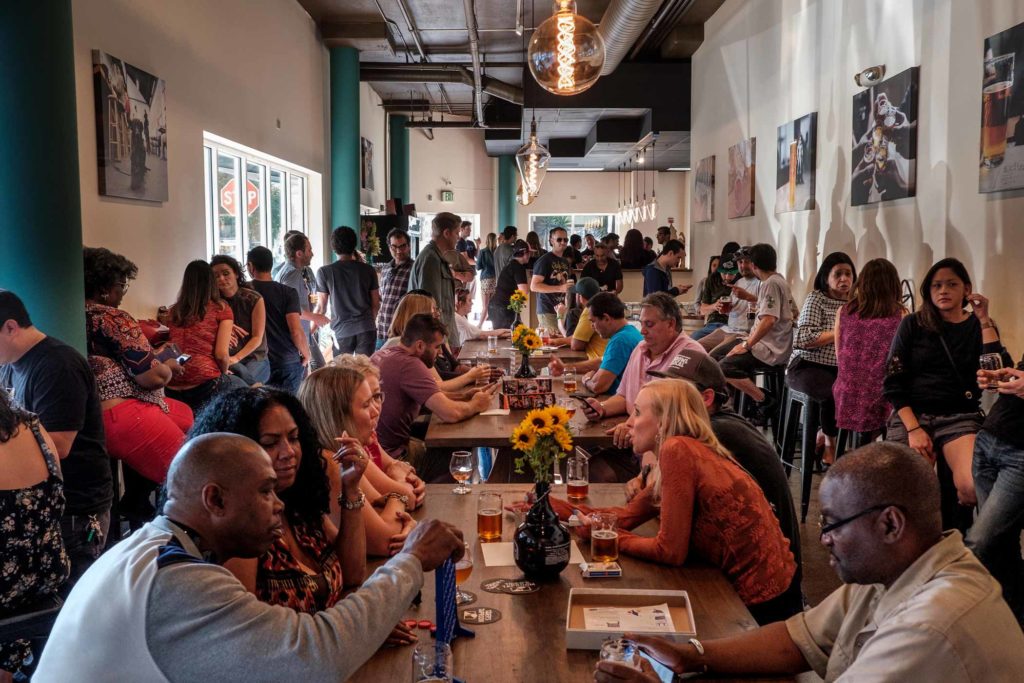
Photography courtesy of Tiger’s Taproom
We saw people once again visiting taprooms to drink. And we ourselves got out to so many breweries this year, from ones in Denver to Atlanta to Sacramento and beyond.
But it’s not just what we saw. The data supports this beer trend.
Next Glass* CEO Trace Smith recently gave a presentation on beer trends in the industry and shared some important insights.
Untappd collected data on how foot traffic to bars, restaurants, other retailers, and brewery taprooms has evolved from 2019 to the post-pandemic period. The world’s largest craft beer social networking app indexed check-ins during January 2019 at the Brewery Taprooms, Bars + Pubs, Restaurant, and Other Retailers categories as a percentage of total retail check-ins, to explain beer trends in relative share among the four categories.
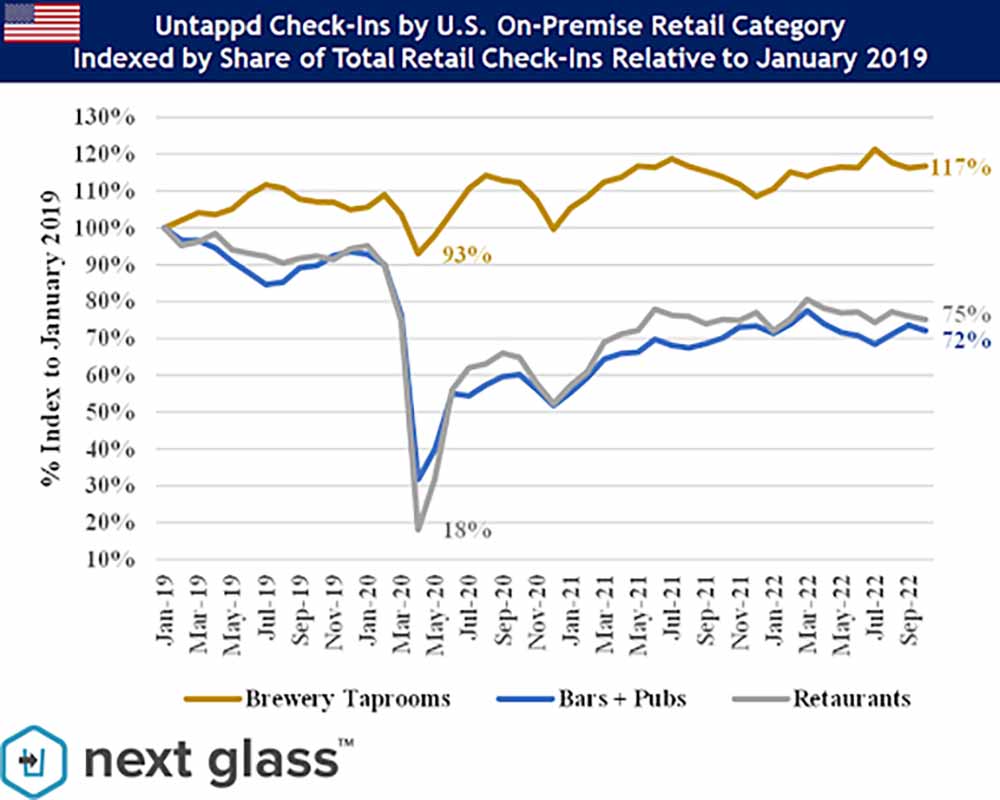
Graph courtesy of Next Glass
As you can see from the graph above, brewery taprooms remained remarkably resilient as a check-in destination from Untappd users during the pandemic. But even more interesting, the Brewery Taproom category in the U.S. has continued to take share from the Bars + Pubs and Restaurant and even Other Retailer categories in 2022. With a 117% share of check-in volume, taprooms are where Untappd users are drinking most.
Smith attributed this in part to a fundamental shift in American consumer behavior. This means drinkers are once again choosing to spend their hard-earned dollars in physical brick-and-mortar locations.
And while this is certainly amazing for all craft beer drinkers out there…
To us, we see this as an incredibly unique opportunity for brewery owners. If we know taprooms are where people are drinking the most, how can we maximize these spaces to draw in even more foot traffic while simultaneously boosting bottom lines?
Well, read on to beer trend number two.
*Next Glass is the parent company that currently owns Hop Culture, Untappd, BeerAdvocate, and Oznr, among other brands.
Safer Spaces to Drink
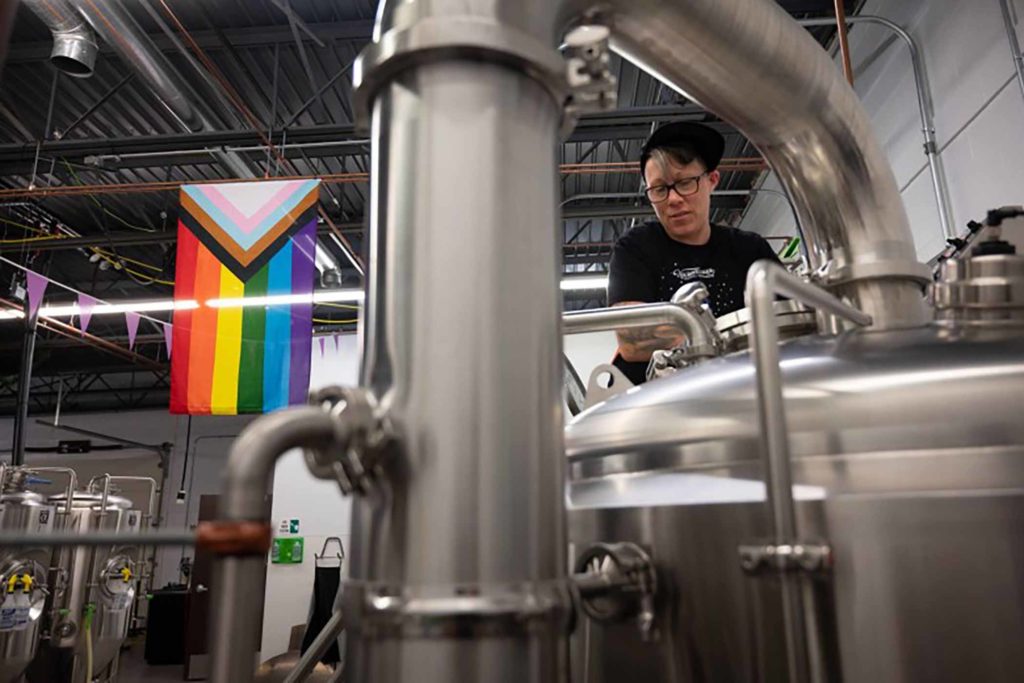
Photography courtesy of Stephanie Strasburg | PublicSource
From our perspective, we hope this is the most important and growing beer trend of 2023: making drinking spaces more inclusive and safe.
Hop Culture Managing Editor Grace Weitz is currently writing a story on just that—how breweries are successfully creating safer spaces in their taprooms.
She’s found spaces like Necromancer Brewing in Pittsburgh, PA, a white, male-owned brewery with two Queer femme-identifying brewers running things in the back of house. Both have told Weitz that Necromancer is the safest environment they’ve ever worked in. And as a result the brewery has become a haven for the Queer community in Pittsburgh, with Queer applicants applying in droves and a steady stream of Queer folks drinking in the taproom and supporting the business.
Necromancer Founder Ben Butler told Weitz, “Our culture is very intentionally focused on creating a safe place and an environment where even right now we have all members of the Queer community seeking us out for employment…people have seen us not only talk the talk but walk the walk, go toe to toe with people who have made remarks, and done things that we’ve taken stands against and seen our track record. Now we’re getting bombarded by applicants who represent the community, which is a massive win for us and shows the credibility and way the community views us.”
And they’re just one of many breweries setting the standard for safer spaces in the industry.
One of our “11 Best Breweries to Watch in 2023,” Jamaican-Indian and BIPOC-owned Wah Gwaan hosts a Black People Know Things Trivia night every month that focuses on Black culture, media, and music. According to co-founder Harsha Maragh, it’s the most well-attended event the brewery hosts. On a random Tuesday, a typically slow night in the middle of the week, they attract upwards of 50 people, many who have never been to the brewery before.
She told Weitz, “It’s the day every seat is full and the day that everyone sings with every song that’s played… That’s beautiful and awesome to me because I don’t know if there is another brewery that has that vibe on any day of the week… It’s my favorite day every month.”
Beyond that, she says the event attracts a lot of folks who don’t traditionally drink beer, but after visiting the brewery and enjoying beer in an approachable way in a place they feel comfortable, they change their views. Maragh says she’s seen a bunch of people from trivia nights come back on another day to drink because they realize they liked beer and they could drink it in a place they feel safe.
Those are just two of many more examples we want to see more of this year. Creating safe spaces in taprooms is a beer trend we hope flourishes in 2023.
Editor’s Note: Hop Culture is currently working on a piece featuring Necromancer, Wah Gwaan, and other breweries’ efforts to create more inclusive and safe spaces in craft beer. Look out for that content to be published later in 2023.
Brewery, Festival, and Brewers Guild Codes of Conduct

Hop Culture Managing Editor Grace Weitz and Hop Culture Founder Kenny Gould at Queer Beer 2022
For the first time since the pandemic, in 2022, we returned to in-person festivals, hosting our fifth annual Beers With(out) Beards in Portland, ME, and our first-ever in-person Queer Beer in Washington D.C.
Our number one priority for both these festivals was a renewed focus on safety and inclusivity.
Accordingly, we updated our Festival Code of Conduct. We deployed tools like #NotMe, a digital, resolution-seeking reporting platform for those who’ve experienced or witnessed racism, harassment, or any type of discrimination or misconduct. And we partnered with organizations like Safe Bars, a Washington, D.C.-based nonprofit whose mission is to prevent sexual harassment and assault in nightlife by teaching active bystander skills. Safe Bar brings together decades of work against and research on gender-based violence with the knowledge of industry professionals.
More than a beer trend, this should become an industry standard: Every brewery, beer festival, and brewers guild association should have a publicly displayed code of conduct that clearly outlines an organization’s dos and don’ts.
“Not just every brewery should have a code of conduct, but every company,” Butler told Weitz. “Every company needs to have one, point blank.”
He believes Necromancer’s code of conduct is fundamental to running the business and a key part of why employees feel safe working there and people feel safe drinking in the taproom.
And it’s not as hard to create as one might think. Necromancer looked to the Brave Noise movement for helpful language putting their code of conduct together. Accordingly, they have an almost three-page document that’s easy to read, but you walk away blatantly understanding what’s acceptable and what’s not in their business.
We read it! It’s posted online for anyone to see and it’s clearly presented to any new employee right from day one.
Butler says in any situation he runs into as a business owner, he always goes back to his code of conduct and it helps him make decisions.
And it’s evolved from day one and it will continue to evolve as Butler says he hears other good counsel from folks in the industry. “It’s a constant process of being vigilant, protective, and trying to promote the right values,” says Butler. But he says it’s an invaluable piece of his business.
If you’re not sure where to start, we recommend reaching out to organizations such as Brave Noise, which has a ton of great resources. Or even companies like Crafted for All, an organization started by Dr J, who currently leads the Brewers Association’s Diversity, Equity & Inclusion (DEI) department as the association’s Equity & Inclusion Partner.
Moving forward, if we expect our industry to continue to become more inclusive and safe, every brewery, festival, or brewers guild needs to implement a code of conduct.
Drumroll Please for RTDs
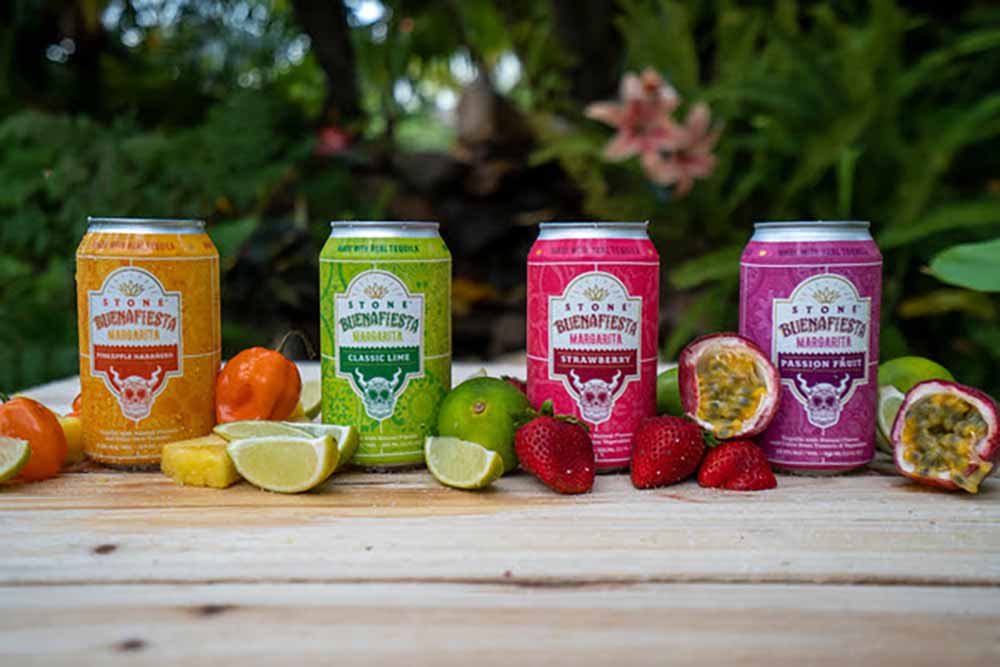
Photography courtesy of Stone Brewing
How is a Ready-to-Drink (RTD) beverage a beer trend? Well, RTDs were one of the only categories to really thrive during the pandemic, and those ripple effects are continuing to…well, ripple.
According to the alcohol e-commerce site Drizly, RTDs within the spirits category gained +400% share year over year from 2019 to 2022 on the platform.
And in a survey performed on the site in October, forty-seven percent of respondents indicated that they would drink RTDs year round, regardless of the season.
All this points to RTDs seeing sustained, healthy growth into 2023 and beyond. We expect that RTDs will continue to see three-digit growth.
Which means…
Breweries Go Beyond Beer…And Hard Seltzer
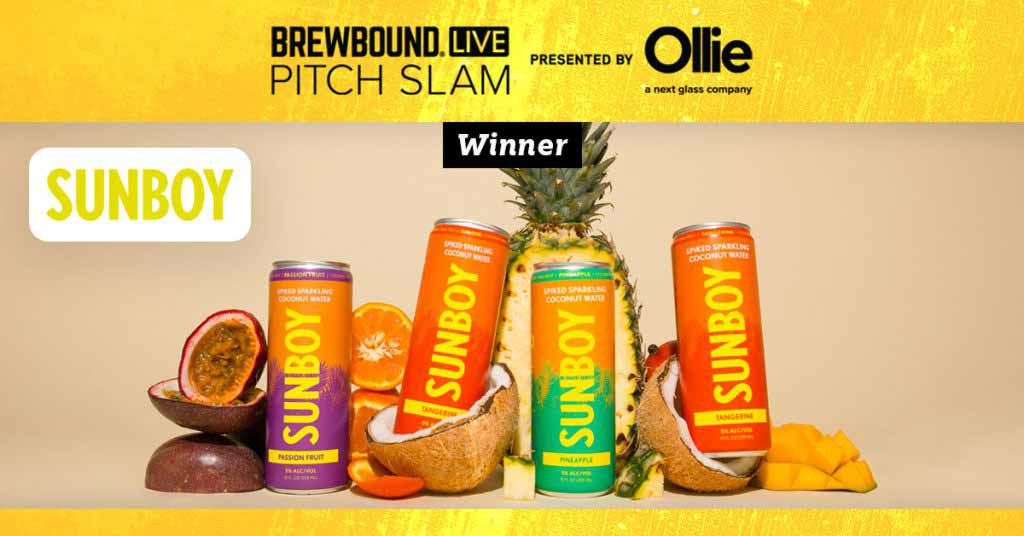
Graphic courtesy of Brewbound
We predict more breweries will start to or continue to invest in beverages beyond beer. And that might not necessarily be hard seltzer anymore. Although hard seltzer has been a beer trend for the last few years, for the first time last year, the alcoholic bubbly showed a seventeen percent year-over-year decrease during the 2022 Labor Day weekend, according to Drizly. And during the summer, one of the busiest times of the year for hard seltzer sales, Drizly reported sales dropping below last year’s Fourth of July numbers.
Instead, we’ve seen breweries like Sierra Nevada invest in brands such as Strainge Beast, a hard kombucha. While the brewery originally released Strainge Beast in 2020, Sierra Nevada recently announced plans to build a new 500,000-bbl facility focused exclusively on beyond-beer products like Strainge Beast or hard tea.
And in Southern California, Stone Brewing launched a lineup of tequila-based canned margaritas under the brand Stone Buenafiesta Margaritas in late October 2022.
Similarly, Boston Beer brand Truly rolled out its new Truly Vodka Seltzer back in October. The cans include six-times-distilled premium vodka and real fruit juice, for a new beyond-beer offering.
Additionally, all RD-focused brands have found success with those like Sunboy Spiked Coconut Water winning Brewbound’s 2022 Pitch Slam Competition presented by Ollie, a Next Glass company.
Basically, beyond beer continues to go above and beyond.
And Beyond NA Beer: A Thirst for Hop Water
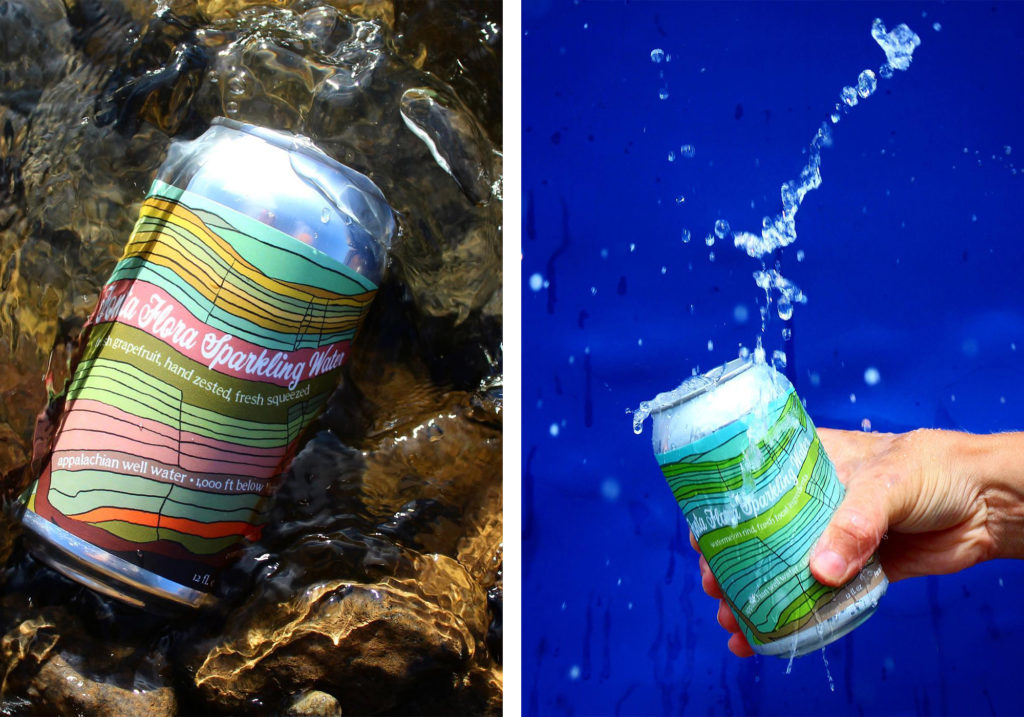
Photography courtesy of Fonta Flora Brewery
At this point, non-alcoholic beer isn’t just another beer trend. In 2021, the non-alcoholic beer market in the United States recorded a revenue of nearly five billion U.S. dollars while the non-alcoholic beer industry generated 25.28 billion U.S. dollars in revenue globally, based on a report from Statista.
And according to Drizly, the share for non-alcoholic beer increased by forty-one percent as of the end of October 2022.
Without a doubt, the non-alcoholic segment is growing in the U.S. and around the world.
But it’s not just the NA beer segment that deserves your attention.
Several brands have materialized devoted to creating hop water, a sparkling non-alcoholic beverage that includes hops. While a few breweries have also packaged their own versions.
For example, Lagunitas has actually been producing its IPA-inspired hop-flavored sparkling water since 2018. But just this year, its California neighbor Sierra Nevada released Hop Splash. And in 2021, we wrote about North Carolina-based Fonta Flora launching its own sparkling hop water.
Some brands have even gone so far as to invest solely in creating hop waters. Those like HOP WTR, Hoplark, and H2OPS (who is actually credited with first using the term “hop water” back in 2014).
So while hop waters have been casually floating around the industry, we feel like this year they finally have some bouyancy. Why?
Well, now more than ever consumers, especially Gen Z folks, are looking for a diverse non-alcoholic lineup of options. Hop waters often come packaged in cans or bottles looking very similar to a beer. Plus, they include hops, a key component of our favorite fermented beverage.
In other words, hop waters are made for a sober-curious, beer-loving consumer. They are a way for people to still participate in drinking culture without the actual ABV intake.
The addition of hops to sparkling water is just a new, unique take on what some may consider the ubiquitous boring bubbly.
Which makes it the perfect candidate for a beer trend in 2023.
The Year of the Czech Lager
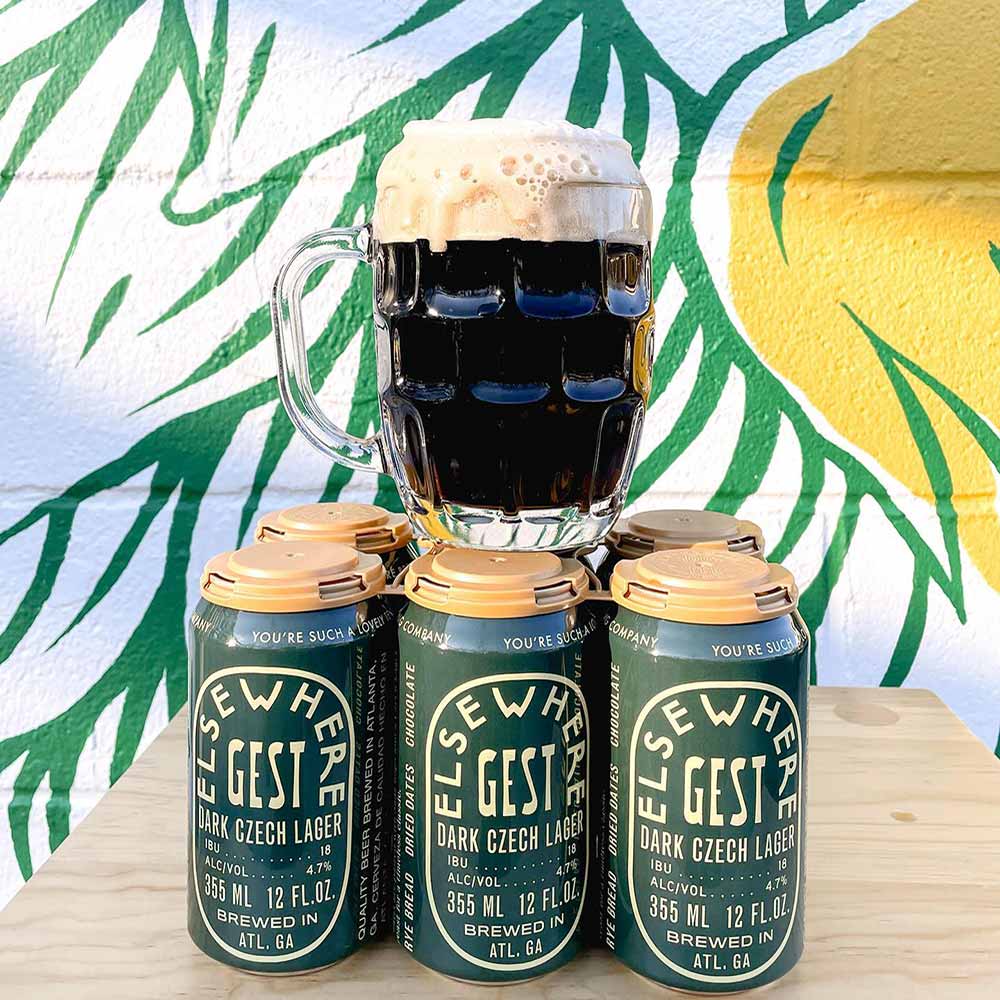
Photography courtesy of @elsewherebrewing | Elsewhere Brewing
Stop me if you’ve heard us talk about this beer trend before: “It’s the year of the lager!” Each year for the past few, we’ve predicted that lagers will make a comeback among consumer preferences. Well it seems like that may finally be happening. According to Drizly, light lagers on the platform gained two percentage points in sales from 2020 to 2021. Simultaneously, IPAs declined two percentage points.
Plus in Drizly’s 2023 BevAlc Trend report, the platform indicated that thirty-eight percent of respondents said they planned to spend the most on lager in the beer category in 2023.
But this year, we actually have a new prediction: This will be the year of the Czech lager.
What makes us say this? Well, we can guarantee you it’s not based on any factual evidence.
Let’s call it more anecdotal proof.
When Weitz visited Atlanta this past November to be the keynote speaker at the Georgia Brewers Guild’s annual symposium, she found a bevy of excellent Czech lagers served around the city.
Many of which she named to ”The 27 Best Beers We Drank in 2022.”
And Atlanta wasn’t the only place. Denver, too, had some excellent Czech lagers on tap. In fact, all-Czech-lager brewery Cohesion made our list of the “Best New Breweries of 2022”, and Alma Mader Brewing in Kansas City, MO, which has a large focus on Czech-lagers, made our list of “The 14 Best Breweries of 2022.”
Suffice to say that we personally feel like Czech lagers should deservedly get more attention in 2023.
…But Belgian Beers Aren’t Far Behind
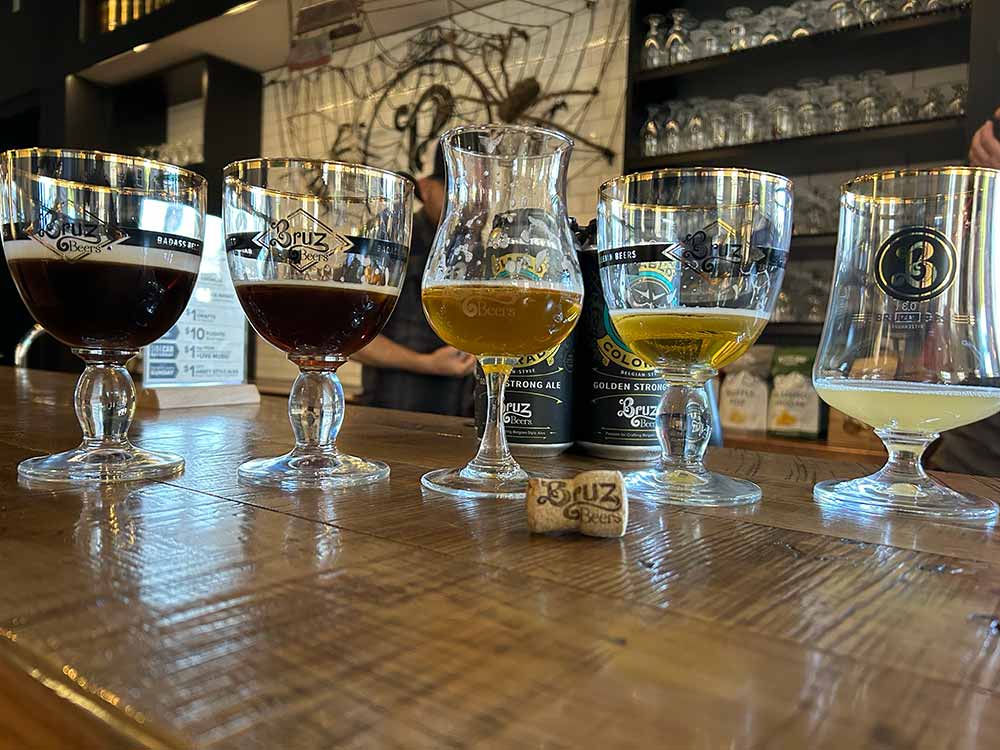
Photography courtesy of Grace Weitz
The country of Belgium has an incredibly complex and robust beer history, punctuated by the tradition of monks or nuns brewing beer and selling it to raise money for their given monastery.
So while, admittedly, Belgian beer styles have been around for centuries, we feel like in 2023 they might finally be getting the recognition they deserve in the United States.
Every year in December, Untappd puts together a culmination of stats from the entire year, including the top highest-rated styles. In 2022, for the first time, a couple Belgian-style beers made it into the top ten.
Traditional lambics landed in tenth with an overall style rating of 4.09 on Untappd while fruit lambics tied for seventh with an overall style rating of 4.1 on Untappd in 2022.
Belgians are known for those Trappist beers like dubbels, tripels, and quads, but also lambics, fruited lambics (like krieks and framboise), Belgian pale ales, and so many more incredible styles.
Some well-known breweries like Allagash, Jester King, Funk Factory, and Primitive have mastered the lambic style of beer here in America.
But others like Bruz Beers have devoted themselves entirely to bringing Americans the vast variety of Belgian beers from Abbey-style ales to witbiers.
For making badass Belgian beers, we named the Denver-based Bruz Beers one of our “14 Best Breweries of 2022.”
And quite frankly, we hope we see and discover more of these dedicated Belgian breweries here in America in 2023.
This is a beer trend we really hope everyone gets behind.
Do you know of a Belgian-inspired brewery here in America? Share it with us at [email protected]
Cold IPAs Stay Hot
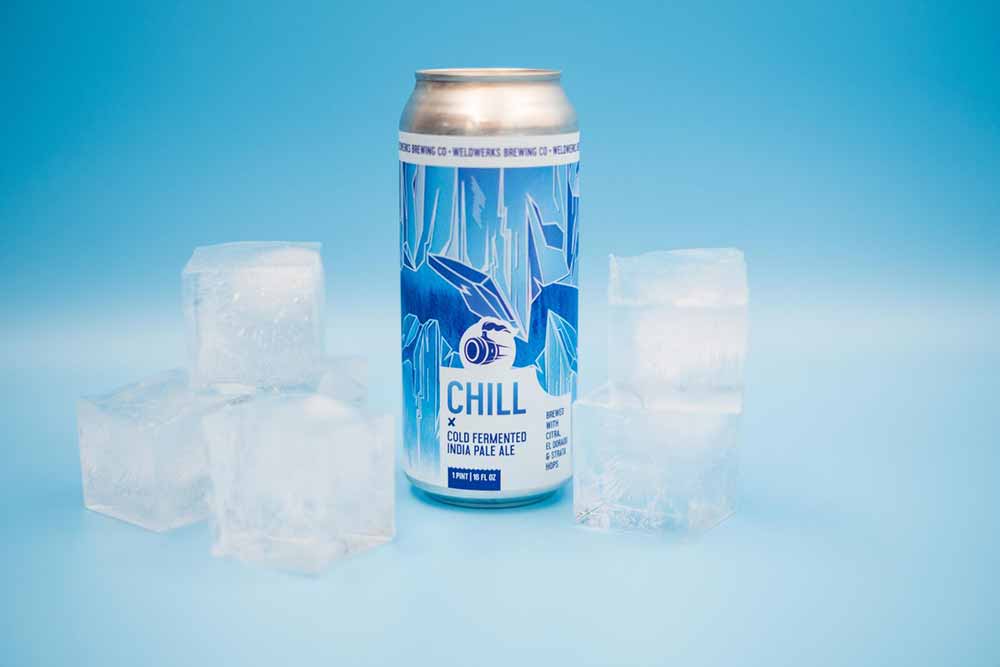
Photography courtesy of WeldWerks Brewing Co.
In a nutshell, “a Cold IPA is an IPA fermented at lower temperatures than what is normally used to ferment an ale,” writes Skip Schwartz, head brewer at WeldWerks Brewing Co., in an email to Hop Culture. Fermenting an IPA at colder temperatures means brewers often use a lager yeast or a combination of a lager and an ale yeast.
“It’s going to be super crushable, super crispy, but stronger than lagers,” says Lauren Hughes, head brewer at Necromancer who brewed their own version of a Cold IPA called Cold Feet. “You’re looking for alcohol content equal to a regular IPA or West Coast IPA, something that’s really going to showcase the hops you’re working with to get that clean grain bill.”
In other words, a Cold IPA should be a hop-forward ale with characteristics common in an IPA, but a beer that’s ultimately crisper, cleaner, and more crushable like a lager.
First pioneered by Wayfinder Beer in Portland, OR, Cold IPAs have popped up in the portfolios of revered breweries all across the country. For instance, WeldWerks, Necromancer, Reuben’s Brews, Alvarado Street, Great Notion, and so many more.
We can tell you from first-hand experience that almost every brewery that sent us a package of beer this year added its own version of a Cold IPA for us to try.
Perhaps the Cold IPA is in an atmospheric river right now (sorry, we live in California and have experienced non-stop rain due to this climate phenomenon for the past three weeks). Basically, it may just be a style that’s drenching the country constantly for a short period of time. But we at least expect it to stick around for the next year.
Now whether this beer trend fizzles out like a Brut IPA or a Black IPA still remains to be seen. But for now we predict Cold IPAs will sizzle in 2023.

